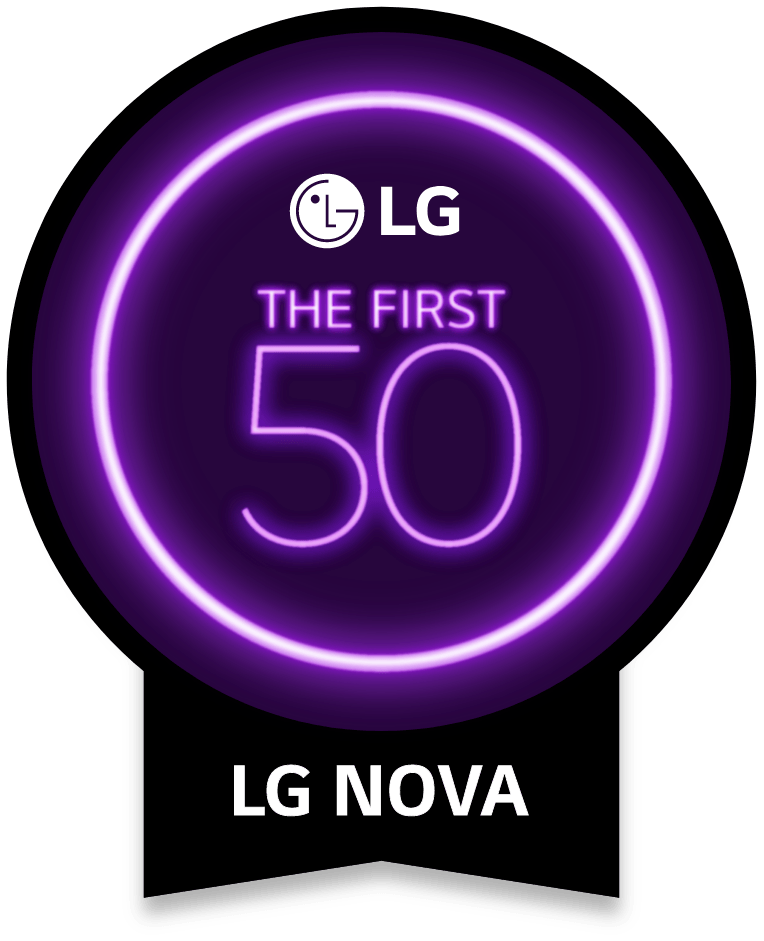LG chooses BrandXR, Pinterest jumps into AR and Satya Nadella on the Metaverse!
LG chooses BrandXR, Pinterest jumps into AR and Satya Nadella on the Metaverse!
Welcome to the Metaverse

BIG NEWS! LG chooses BrandXR!
We are one of just 12 Metaverse firms chosen
The BrandXR team received great news this week, as LG named us as one of 50 businesses that will participate in the company's Mission for the Future program!
The participants were chosen from more than 1,300 applicants.
The breakdown includes finalists in five categories, with BrandXR being one of just 12 in the Metaverse category.
In a release announcing those chosen, LG officials said the selections represent "innovations in industries that will have the most immediate impact on society now and in the future."
We are proud to be a part of this program and cannot wait to work with the LG team!

Pinterest going all in with augmented reality.
THE NEWS
Pinterest hopes AR rejuvenates its fortunes
There was a time when social media and image-sharing site Pinterest was considered one of the beacons of light in a fast-emerging world of social media.
It was huge and most of the content was pretty innocent and non-controversial. That has not stopped but the company's user growth slowed.
The company's reported 442 million users as of December 2021 represents a miniscule 3.8% jump compared to average annual growth of 32.5% the previous four years.
However, a report this week that the company has partnered with several home improvement stores, including Crate & Barrel, Walmart and Wayfair, proves that this company will hold nothing back in its battle for relevance.
The company on Jan. 31 introduced its latest version of augmented reality.
They call it Try On for Home Decor, a naming pattern that follows its convention of Try On for lipstick and eyeshadow.
The partnership allows anybody shopping for decor on the social site to preview how a piece of furniture looks in their home before buying.
Yes, they are not the first to do this, of course. But that's a huge user base being immersed in augmented reality.
While the rollout was cool, we were particularly interested in some of the data released here.
Pinterest's internal data showed that shoppers were five times more likely to buy after seeing a Try-On pin versus a standard pin on the site.
Meanwhile, usage of the makeup-based Try On version grew by Gen Z and Millennials by 28 and 33 percent, respectively, clearly indicating interest.
OUR TAKE

Augmented, virtual and all of the realities are the engines that will power the so-called Metaverse. Believe it or not, despite the huge stream of news and stories about huge companies coming out with augmented reality-based efforts and initiatives, we are still only scratching the surface of the companies we will see. That's why 2022 is going to be a formative year. Can't wait.
We hope you like what you see. We bet your friends would, too!
Forward to other Metaverse and XR junkies and let's build this community!

THE NEWS
"Metaverse" use growing
It's a growing phenomenon, if you look at the research.
The number of companies using the term "metaverse" in their marketing has jumped to more than 500 since the artist formerly known as Facebook changed its name to Meta in November.
Everybody wants a piece of this action.
Overall, 26 apps - or about five per month - added the word "Metaverse" to their names or description from June to October.
But from November to January? Well, that number was 86 or nearly 30 per month.
That's some market claiming!
OUR TAKE

Who are we at "Marco, Moody and the METAVERSE" to tell others how to market their products and to not use "Metaverse?"
In fact, we welcome it.
The more the merrier.
While these numbers represent a slight blip, that blip will grow and we are curious to see how that number changes as we move forward.

THE NEWS
Microsoft CEO Satya Nadella on the Metaverse
Man, if you're not paying attention to the video game wars between Microsoft and Sony, you're missing out on some damn good drama.
One of the latest volleys was Microsoft announcing this week that it had purchased Activision Blizzard for more than $60 billion.
Why did they do that?
Well, according to a newly published interview, CEO Satya Nadella wants that move to serve as a signal that the company is ready to go all in on the Metaverse.
"Metaverse is essentially about creating games," he said. "It is about being able to put people, places, things [in] a physics engine and then having all the people, places, things in the physics engine relate to each other."
OUR TAKE

Anything that expands the profile of the Metaverse, obviously, is welcome.
But this is a major technology company saying that one of its most expensive acquisitions to date is directly related to its plan to immerse itself deeply into it.
It cannot be overstated how big this is.
It's as big as Facebook becoming Meta because these behemoths, well, they have a lot of money.
What can businesses with a lot of money do? They can experiment.
Experimentation often leads to the next big thing.
Meet BrandXR's new
Community Director: Ari!

In company news, we recently welcomed a new face to the BrandXR team!
That's always a great day for a young company, as the larger the team we have, the more each of us can focus directly on our strengths.
While they're new to us, however, they're not new to our hometown of Orlando.
Ari Cannavino comes to us from the Orlando Science Center, where they were an educator for nearly four years.
At BrandXR, they will help keep our founders and our team on task and organized as we push forward our vision of no-code, augmented reality accessibility for people of all skill levels.
You can learn more about Ari on our FACEBOOK PAGE (WHICH YOU SHOULD "LIKE" WHILE YOU'RE THERE!).
NOT SO FAST THERE, ZUCK

We aren't shy here about our thoughts about Mark Zuckerberg's renaming of Facebook to Meta late last year.
We said in a previous newsletter that the move was Zuck basically trying to claim ownership of this whole new world.
Turns out someone else out there is even less impressed than us.
Look, our disagreement with Zuck had nothing to do with our assessment of the viability of the Metaverse.
Clearly put: It's going to be a thing.
It's going to be big.
If you're a business now, you should determine how (not if) your company will fit into that puzzle.
But Evernote boss Phil Libin, however, seems like he wants to fight the Zuck.
"I had a very strong feeling that it would suck."
Well, at least your mind wasn't made up beforehand!
Check out THIS ARTICLE for more.
JUST ONE MORE THING

Let's do a magic trick.
Ready? OK.
Pick a technology, any technology.
Got one? Great.
Now, hold that technology behind your back and don't let me see it.
Without any hesitation, I will describe the technology to you. Here goes:
"A technology that, when it was first invented or discovered, naysayers and doubters found their voice and put their opinions out there as a way of getting some attention."
How did I do? Well, it's happening again.
A growing number of skeptics are emerging around the Metaverse.
However, it appears most of those are naming Mark Zuckerberg as the target of their skepticism.
That's a problem.
Zuck will not build the Metaverse himself. He won't build half of it himself.
There are so many players out there building this that basing your opinion on one effort can be dangerous.
I'm excited to see this play out and am optimistic.
In the meantime, why don't you all have a gander at what Katie Couric had to say about the crazy technology that she knew wouldn't last. She called it "Internet."














